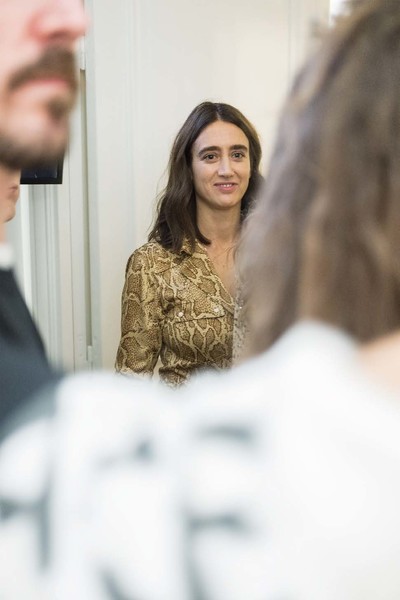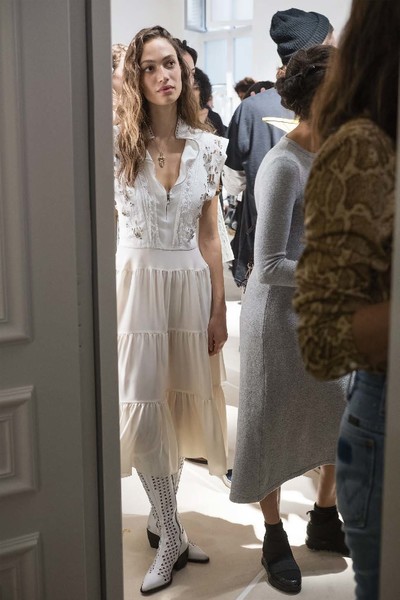Natacha Ramsay-Levi’s first season as the creative director of Chloé.
By Alice Cavanagh
Photographs by Anders Edström
Natacha Ramsay-Levi’s first season as the creative director of Chloé.


The first look was developed early on, with the whole collection focused on the duality of something old and something current. For the first look, the linen of the dress’s bodice is mixed with the silk of the skirt, a kind of collage, and then we painted the linen white to give the impression of something being a bit “off”.
I started with a dress because Chloé is a house that has so many dresses; it’s recognized for that. It was important to start with white, or off-white, as well because I think Chloé is well known for its beiges and its nudes. [Chloé founder] Gaby Aghion said she saw “the colours of Egypt”, and I loved that idea. So I worked with mineral, organic colours: dusky pink, sand, and beige. White is the virgin form of this palette and was a good place to begin. White also felt right for a Victorian-inspired dress.
We started to do these classic English embroideries, which could be 19th century, and then thought about how we could rework them for today. So we added piercings and metalwork; we added something a little punk. The 1970s and the Victorian era were a key reference, because something about dresses at that time was so feminine. Aesthetically, I’m especially drawn to the 1970s, because it was an era when fashion worked with the body, and represented lifestyle and personality.
We found this silhouette quite early on. But we adjusted the dress when I met Sophie Koella, who opened the show. Sophie was one of the first girls we cast. I’d seen her in a magazine and thought she had such amazing natural beauty. I called Ashley [Brokaw], my casting director, and she said: “She’s beautiful, but she doesn’t do shows, because she doesn’t correspond with what people want for shows.” I liked that: as a designer you want to create your own identity with the casting.
I met with Sophie in July. She was as gorgeous as expected, but was a bit lost in the clothes because she doesn’t have a classic model’s build. It was a bit like taking a dress and adjusting it for an actress for the red carpet – this idea of clothes evolving with a woman. Sophie has an amazing neck, so we wanted to show it, and she has beautiful skin, so we wanted to show her arms. It was different, customizing the look to the girl, to change the way you usually think. But I like the idea of that.
Female designers design differently because we think about how to wear it, how it feels and fits – where the clothes fall on your body. At the moment, I like high-waisted pants that come in at the waist, because they give you a particular stance. But it’s more than just about being a woman and asking if I’d wear it or not; it’s also about the feeling you have when you wear a piece.
The way we dress is a way of expressing our personality. It’s a dialogue you start with someone else; it’s that first introduction. The thing about the boots in the first look, for example, is the determination and energy you can put into them. That can translate into movement – you can have that same determination in your walk. The boots give a strength that I think balanced the romanticism of the clothes.
The Venus totem on the necklace in the first look emerged as a theme quite early on. It’s from an ancient period, when femininity was something you cherished. These ideas, at Chloé, started with Gaby, who for me is an eternal inspiration. There is still so much to discover about her; each time I learn something about her, I feel that she was so avant-garde and her work is still so relevant. When I found the Venus totem, I thought, of course, Chloé as a house wants to explore the idea of femininity. There is this idea of embracing different kinds of women, of not imposing a “look”. This is very Chloé: the idea of gathering different typologies and ideas around femininity. I will keep trying to do that.’